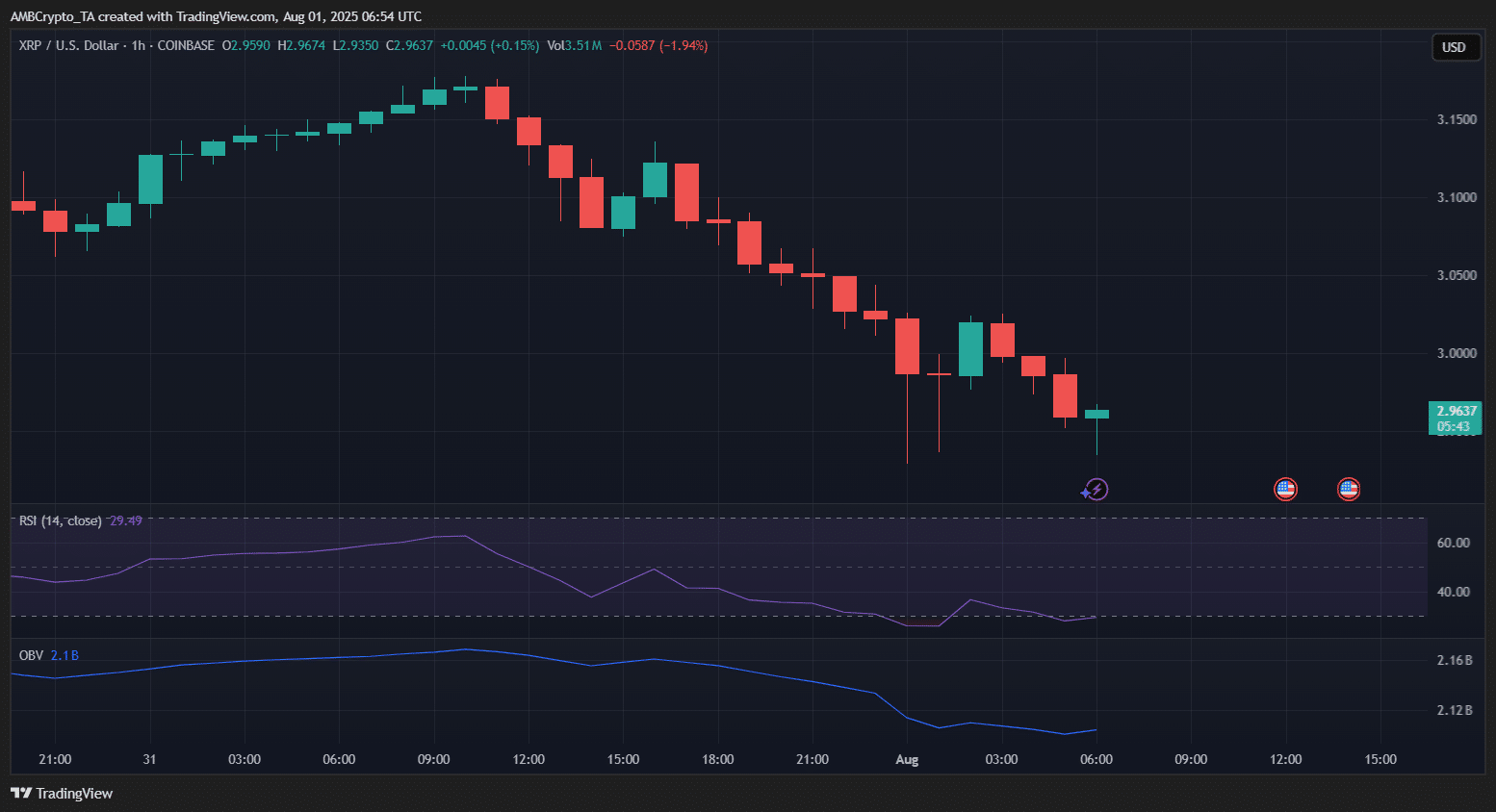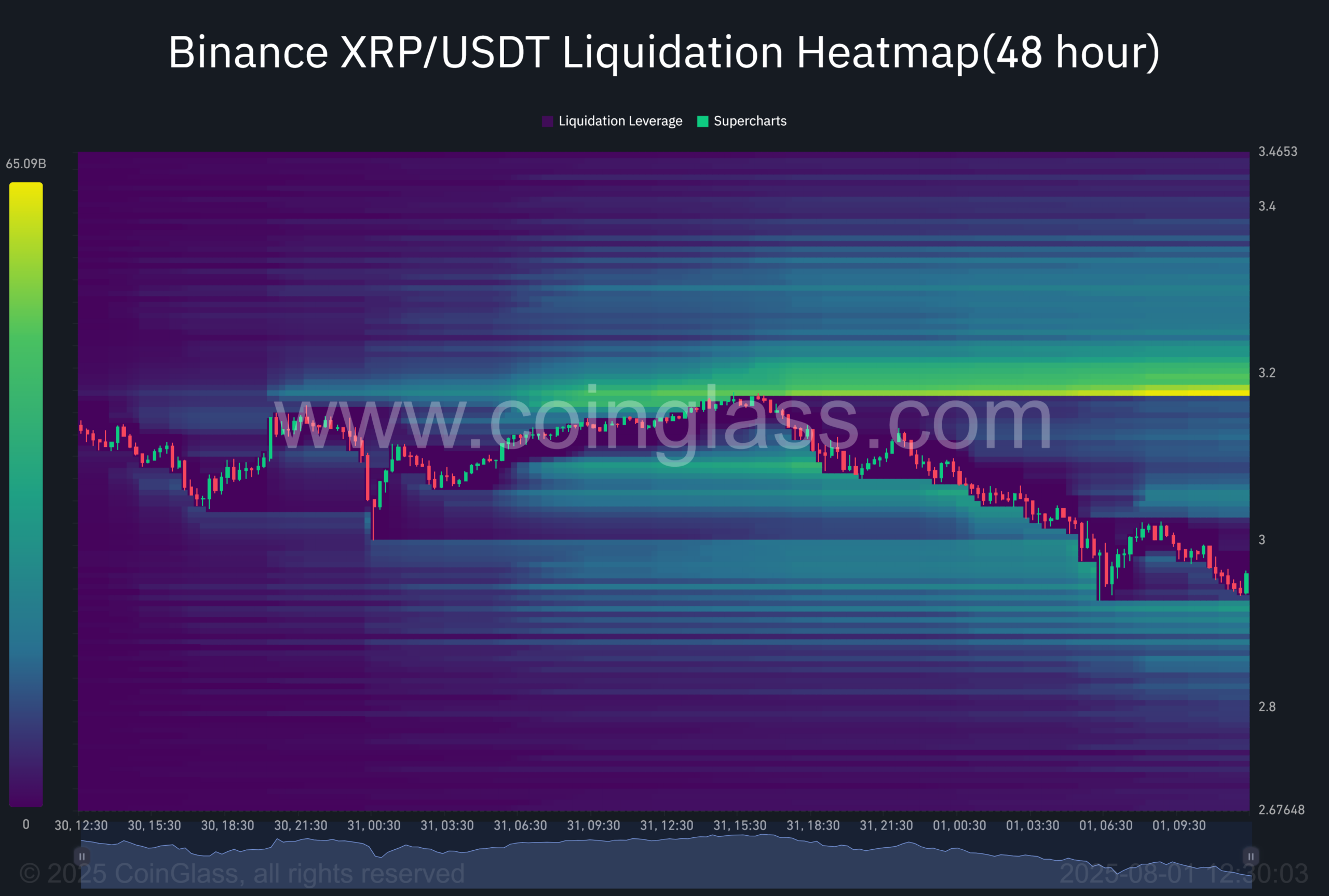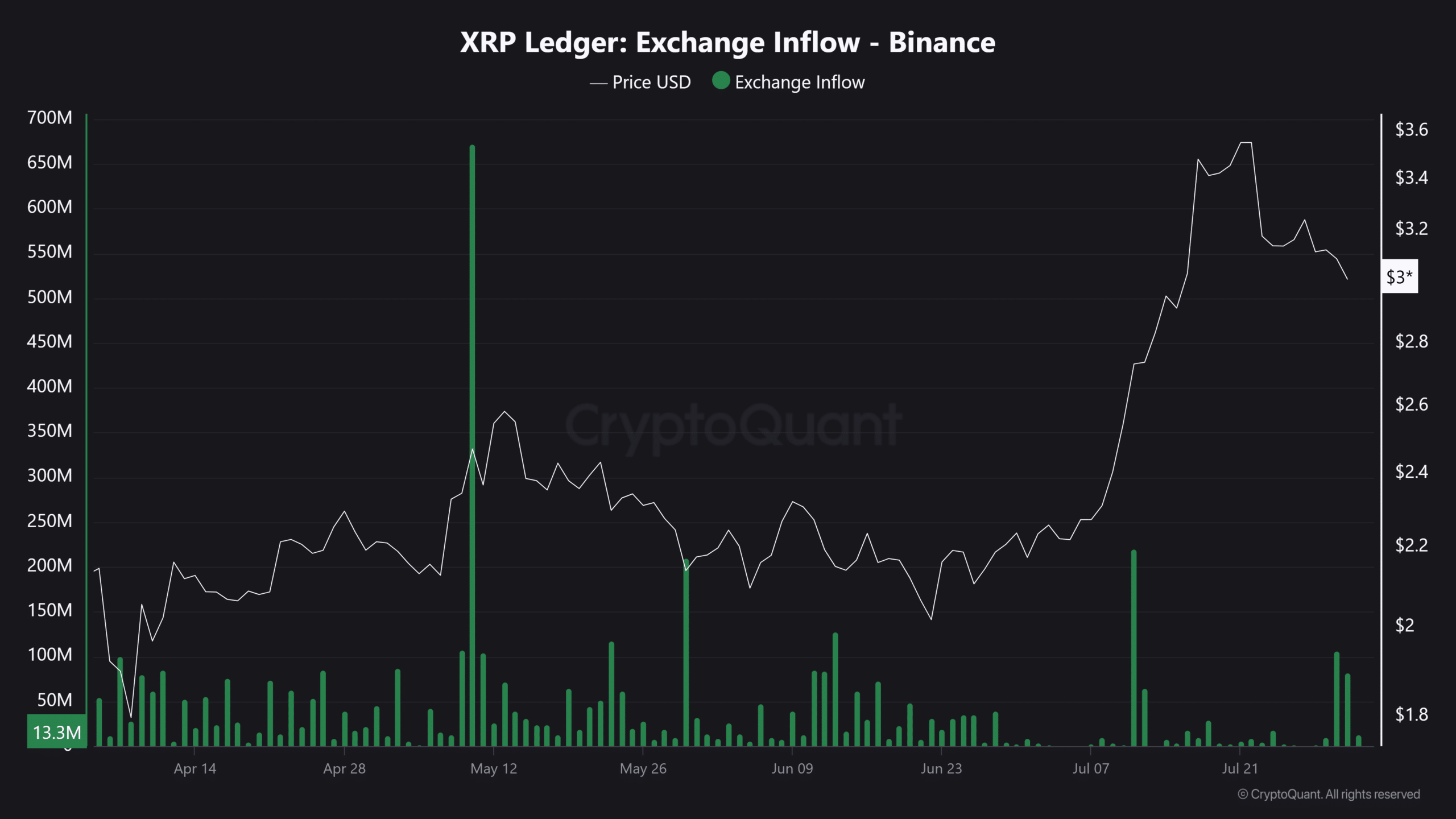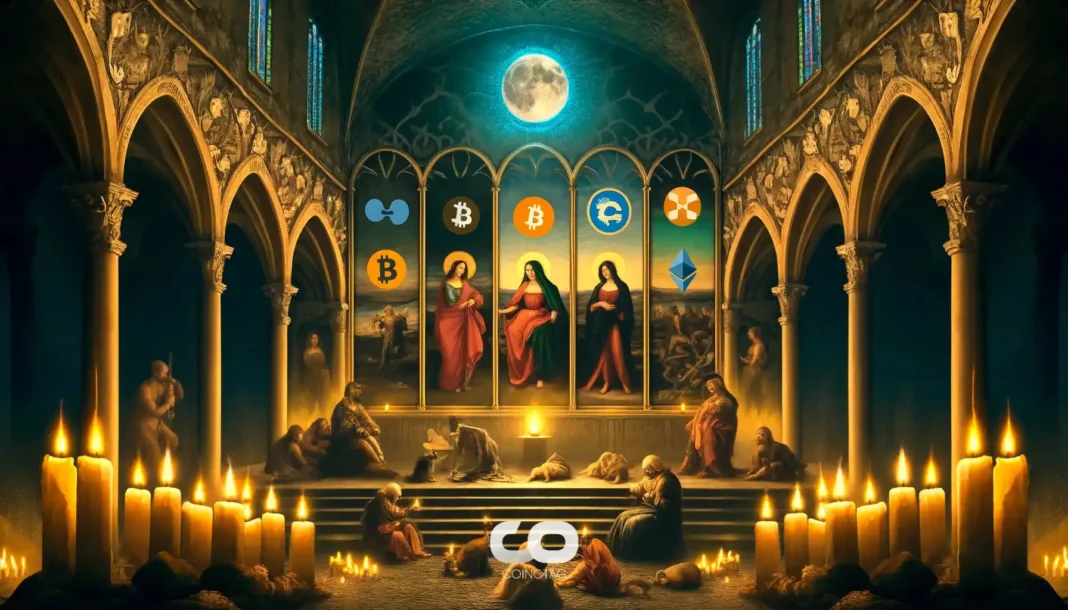XRP has fallen below $3 following a failed breakout and strong selling pressure from retail and large holders. On-chain data shows this decline is driven by profit-taking, not panic, signaling potential further downside without renewed buying interest.
-
XRP’s price drop followed a rejection near $3.15, triggering oversold conditions and aggressive selling.
-
Binance liquidation data reveals a bull trap around $3.20, causing forced sell-offs among leveraged traders.
-
On-chain inflows to exchanges increased, indicating profit-taking rather than panic selling, according to Cryptoquant data.
XRP falls below $3 amid heavy selling and failed breakout; profit-taking drives the move. Stay updated with COINOTAG’s expert crypto analysis.
XRP Breaks Below Key Resistance After Failed Breakout
Ripple’s XRP failed to sustain gains above the critical $3 resistance, falling sharply below this level. The price reversal from a local high near $3.15 was marked by a significant shift in momentum, with the Relative Strength Index (RSI) plunging to 29, indicating strong bearish pressure. This breakdown highlights a weakening buying interest and raises concerns about further downside risks.
What Does On-Chain and Technical Data Reveal About XRP’s Decline?
On-chain metrics and technical indicators confirm the bearish trend. The On-Balance Volume (OBV) indicator shows a steep decline, reflecting aggressive selling and diminishing cumulative buying interest. Binance’s liquidation heatmap highlights a concentration of liquidations just above $3.20, suggesting many leveraged long positions were wiped out. This cluster points to a bull trap scenario where traders were caught off-guard by the sudden downturn.

Source: CoinMarketCap
Technical Indicators Signal Strong Bearish Momentum
The RSI’s drop into oversold territory at 29 confirms intense selling pressure. Concurrently, the OBV’s sharp decline signals that sellers dominate the market, with little buying support. These indicators suggest that XRP’s short-term support near $2.90 is vulnerable, and further declines are possible if demand does not return promptly.

Source: TradingView
Binance Liquidation Heatmap Highlights Bull Trap at $3.20
Binance’s liquidation heatmap reveals a dense cluster of liquidations just above $3.20, indicating that many leveraged long positions were forced to close as the price reversed. This zone acted as a bull trap, luring traders into over-leveraged bets before triggering a cascade of sell-offs. The lack of significant liquidation support below $3 suggests weak bullish defense in this price range.

Source: CoinGlass
Profit-Taking Drives XRP’s Recent Decline, Not Panic Selling
Exchange inflow data from Cryptoquant shows a notable increase in XRP deposits to Binance, indicating that holders are moving coins to exchanges to realize profits rather than panic sell. This behavior suggests a controlled market correction rather than a capitulation event, providing a clearer picture of the current market dynamics.

Source: Cryptoquant
| Metric | Value | Comparison |
|---|---|---|
| RSI | 29 (Oversold) | Below 30 indicates strong bearish momentum |
| OBV | Steep decline | Signals aggressive selling pressure |
| Binance Liquidations | High near $3.20 | Indicates bull trap and forced sell-offs |
What is causing XRP’s price to fall below $3?
XRP’s price decline below $3 is caused by a failed breakout attempt near $3.15, followed by intense selling pressure from both retail and institutional holders. Technical indicators like RSI and OBV confirm strong bearish momentum, while liquidation data points to a bull trap that triggered forced sell-offs.
How do on-chain metrics explain XRP’s recent market behavior?
On-chain data reveals increased XRP inflows to exchanges, signaling profit-taking rather than panic selling. This controlled sell-off suggests holders are realizing gains amid weakening price momentum, as supported by Cryptoquant and CoinGlass data.
Frequently Asked Questions
What triggered the recent XRP sell-off below $3?
The sell-off was triggered by a failed breakout attempt near $3.15, followed by aggressive selling and liquidation of leveraged positions, leading to a sharp price decline.
How does profit-taking affect XRP’s price movement?
Profit-taking leads holders to sell XRP on exchanges, increasing supply and causing downward price pressure, but it is a controlled correction rather than panic selling.
Key Takeaways
- XRP’s drop below $3: Resulted from a failed breakout and strong selling pressure from multiple holder groups.
- Technical indicators: RSI and OBV confirm bearish momentum and aggressive selling dominance.
- On-chain data: Increased exchange inflows indicate profit-taking, not panic selling, shaping the current market correction.
Conclusion
XRP’s recent fall below $3 highlights a critical resistance failure and intensified selling pressure. While technical and on-chain data point to profit-taking rather than panic, the risk of further declines remains if buying interest does not return soon. Investors should monitor key support levels and market momentum closely as the situation develops.






